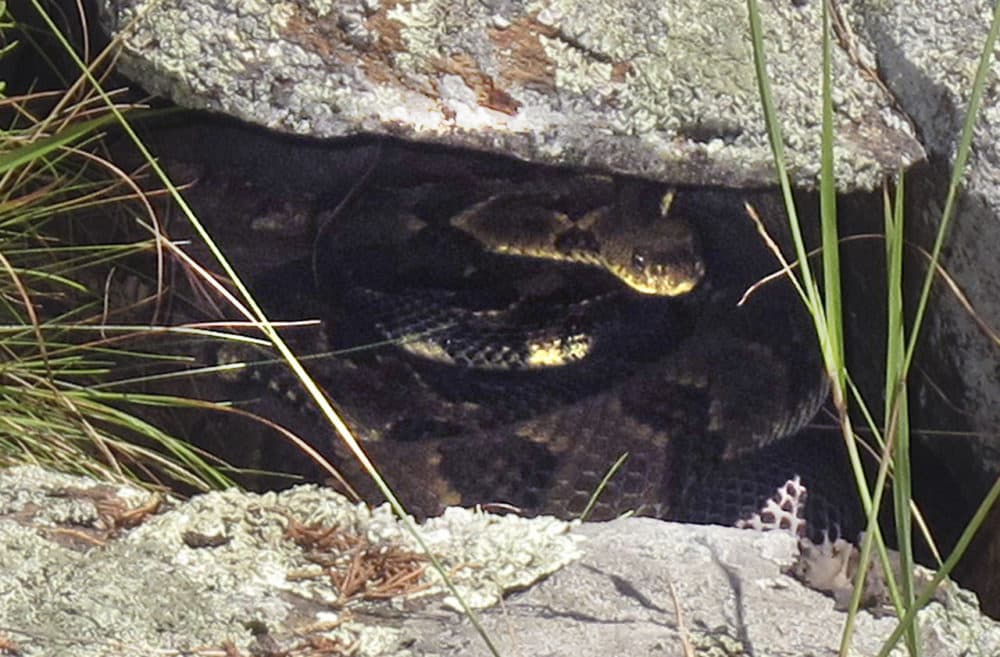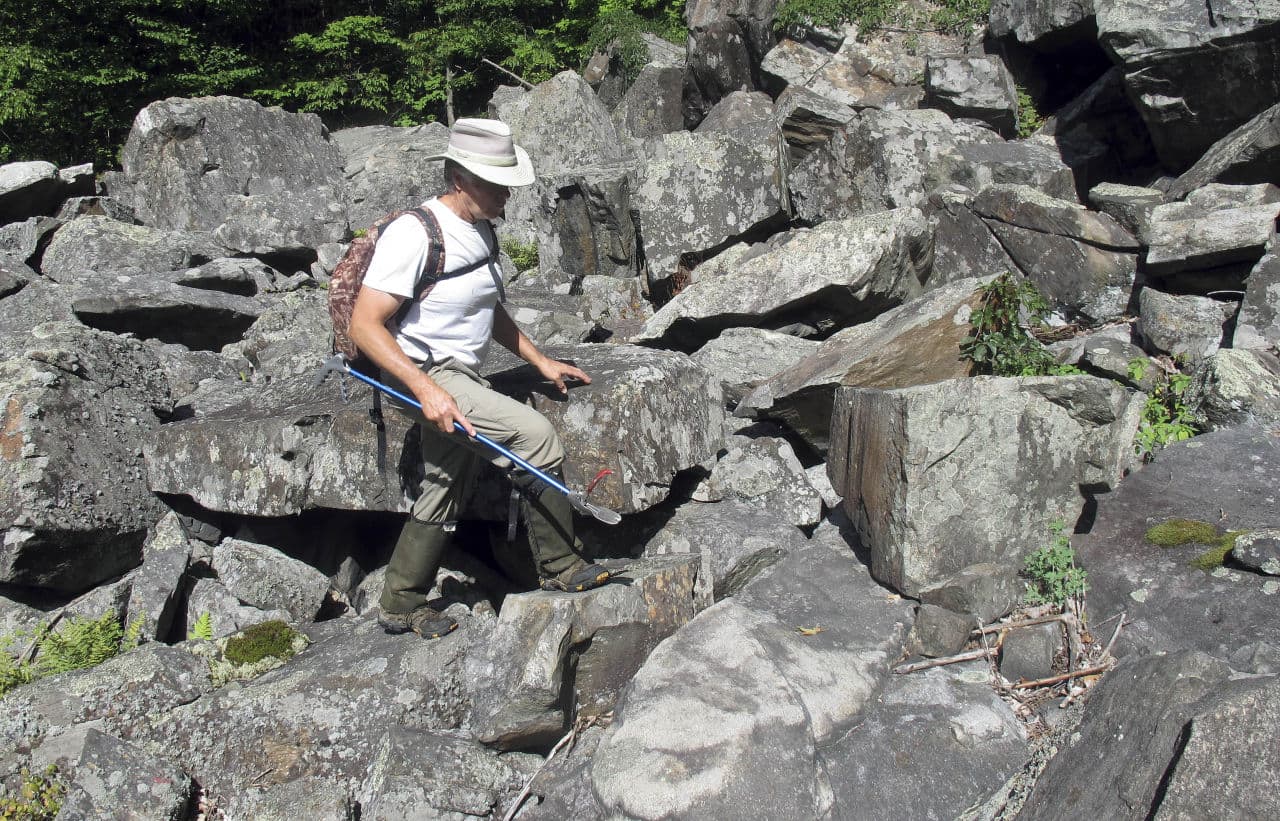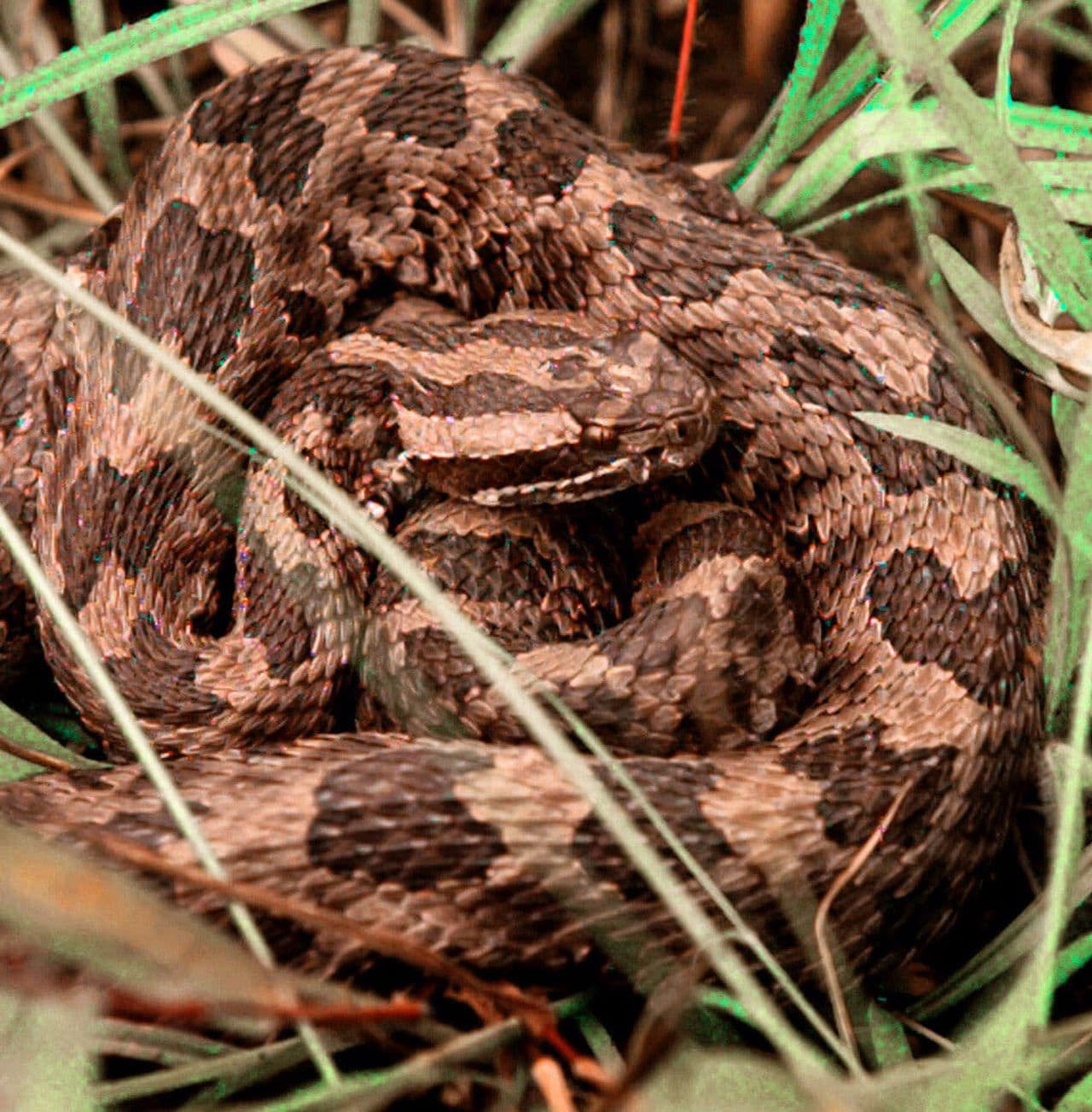Advertisement
Mysterious Fungus Is Killing Snakes In At Least 9 States, Including Mass.

Hidden on hillsides in a remote part of western Vermont, a small number of venomous timber rattlesnakes slither among the rocks, but their isolation can't protect them from a mysterious fungus spreading across the eastern half of the country that threatens to wipe them out.
In less than a decade, the fungus has been identified in at least nine Eastern states, and although it affects a number of species, it's especially threatening to rattlesnakes that live in small, isolated populations with little genetic diversity, such as those found in Vermont, New Hampshire, Massachusetts and New York.
In Illinois the malady threatens the eastern massasauga rattlesnake, which was a candidate for the federal endangered species list even before the fungus appeared.
Biologists have compared its appearance to the fungus that causes white nose syndrome in bats, which since 2006 has killed millions of the creatures and continues to spread across North America.
It's unclear, though, if snake fungal disease, "ophidiomyces ophiodiicola" was brought to the United States from elsewhere, as was white nose fungus, or if it has always been present in the environment and for some unknown reason is now infecting snakes, biologists say.
"I think potentially this could overwhelm any conservation effort we could employ to try to protect this last remaining population," said Doug Blodgett, a biologist with the Vermont Department of Fish and Wildlife who has been studying the state's rattlesnake population for 15 years. "We don't have any control over it. It's just completely out there in the wild."

Rattlesnakes were once found across much of the country, but habitat loss and efforts by fearful humans to wipe them out reduced their numbers, especially at the northern edges of their range.
In New Hampshire, the disease helped halve the population of rattlesnakes - now estimated at several dozen - after it was first spotted in 2006, although it was only afterward that scientists linked the fungus to the decline, officials said.
Vermont's population of timber rattlesnakes is down to two locations near Lake Champlain in the western part of the state with an estimated total population of several hundred.
An Associated Press reporter was allowed to accompany wildlife officials to a rattlesnake habitat on condition the exact location not be revealed out of concern that too much attention could further threaten them. Blodgett led an hours-long search for some of the elusive creatures until he found a pair hiding in a rocky crevice, though it wasn't clear if they were infected. Later, a healthy single snake was found on the forest floor.
Advertisement

The disease can cause crusty scabs and lesions, sometimes on the head.
Jeffrey Lorch, a microbiologist with the U.S. Geological Survey's National Wildlife Health Center in Madison, Wisconsin, said he's been getting reports of snake fungal disease from all over the eastern United States. Not every location is reporting that the disease is threatening snake populations.
"It does seem to be a disease that has different effects in different areas," Lorch said.
The fungus poses a greater risk to snakes that reproduce slowly, such as rattlesnakes, which can live up to 30 years, experts say.
In Illinois every year the disease infects about 15 percent of the population of about 300 of massasauga rattlesnakes, most of which are in Clinton County, with a mortality rate of 80 to 90 percent, said Matt Allender, a wildlife veterinarian and epidemiologist at the University of Illinois who started noticing the fungus in 2011. The mortality rate in infected timber rattlesnakes is estimated between 30 and 70 percent, he said.
The fungus' impact on the massasauga is expected to play a part in the U.S. Fish and Wildlife Service's determination on whether to list the snake as endangered, officials said.
"I think that in populations that have been shrunk due to other mechanisms, such as habitat loss, other environmental changes, those types of things, are more at risk of going extinct from snake fungal disease mainly because it's a smaller population," Allender said. "They have less of a buffer to withstand these diseases."

Part of the challenge in studying the disease is that snakes, especially venomous varieties, don't get much sympathy from the public, which makes funding studies harder. Snakes are also harder to find than, say, white-nose-infected bats where scientists can go into a cave and see tens of thousands of carcasses, Lorch said.
The fungus has been found in all five rattlesnake populations in Massachusetts, but it doesn't appear to have had the high mortality rate reported elsewhere, said Anne Stengle, a Ph.D. candidate at the University of Massachusetts who is overseeing a federal grant in nine states to study the fungus.
Since the initial hit, the decline in the Granite State's timber rattlesnakes appears to have stabilized and some are reproducing, said New Hampshire Fish and Game Biologist Mike Marchand.
"I'm at least optimistic that there are animals that are successfully surviving from year to year as well as reproducing," Marchand said. "We had a pretty strong dip in the population."